The debate over stand-alone jerrycans versus integrated RV-style water systems has raged on since the first time a family went overland. Cans offer all the rugged reliability you could want and are easy to transfer from vehicle to vehicle, but lugging a full can out of the truck at each campsite is a pain. On-board water is the ultimate in convenience, but rough terrain can cause leaks and flood your interior or worse: leave you with no water. What if you could have your cake and eat it too? Living Overland’s 12-Volt Overland H2O System aims to provide just that.
The Overland H2O System is available as a pre-assembled drop-in unit or as a DIY kit. The latter option is a good choice if you like to tinker or have any intention of customizing the setup (Anderson 12-volt connection, different style water tank, etc). I’m glad Beau sent us the DIY kit version, because popping a pre-assembled unit onto a jerrycan and saying “Look, running water!” would not have made for an informative evaluation. Yes, the completed assembly is really that easy to use.
First up in building the kit is reading over the directions, then slicing off part of your beloved Scepter’s lid to make way for the faucet. The rest of the process reads like a Daft Punk song: drill it, tap it, splice it, solder it, heat it, thread it, fit it, fill it and in about an hour the assembly is ready for testing. I had doubts, but the grommet/wire combo seals quite well and passed the 5-gallons-upside-down-for-30-seconds test drip free. It’s a good idea to add a little silicone when you thread the faucet into the lid, especially if the hole wasn’t tapped cleanly.
The finished product is ready for kitchen duty as quickly as flipping the faucet over and plugging it into a power point. The faucet folds nearly flat for travel, and transfers from can to can as easily as swapping lids. While the exposed faucet hardware does make the system a little more fragile than a regular can, that shouldn’t be a problem if you’ve properly strapped in your 45-pound can of water. The variable-speed Whale pump used in this system has plenty of pressure at over two gallons per minute, and at full-tilt will empty a can in just over two minutes. As a bonus, it also has a low enough draw to run directly off a 30-watt solar panel (at a slightly slower speed).
Find the 12-Volt Overland H2O System in DIY kit or fully assembled form in the Living Overland store.



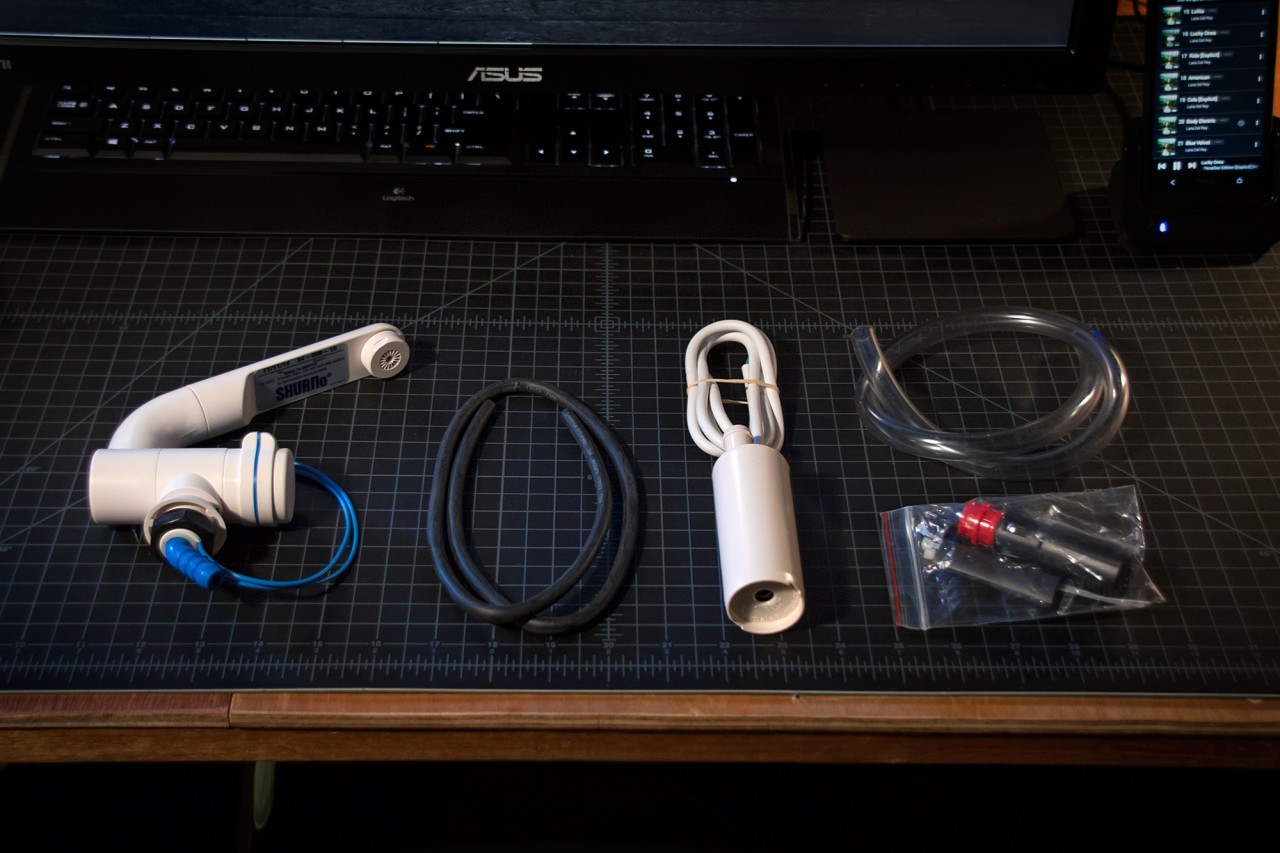

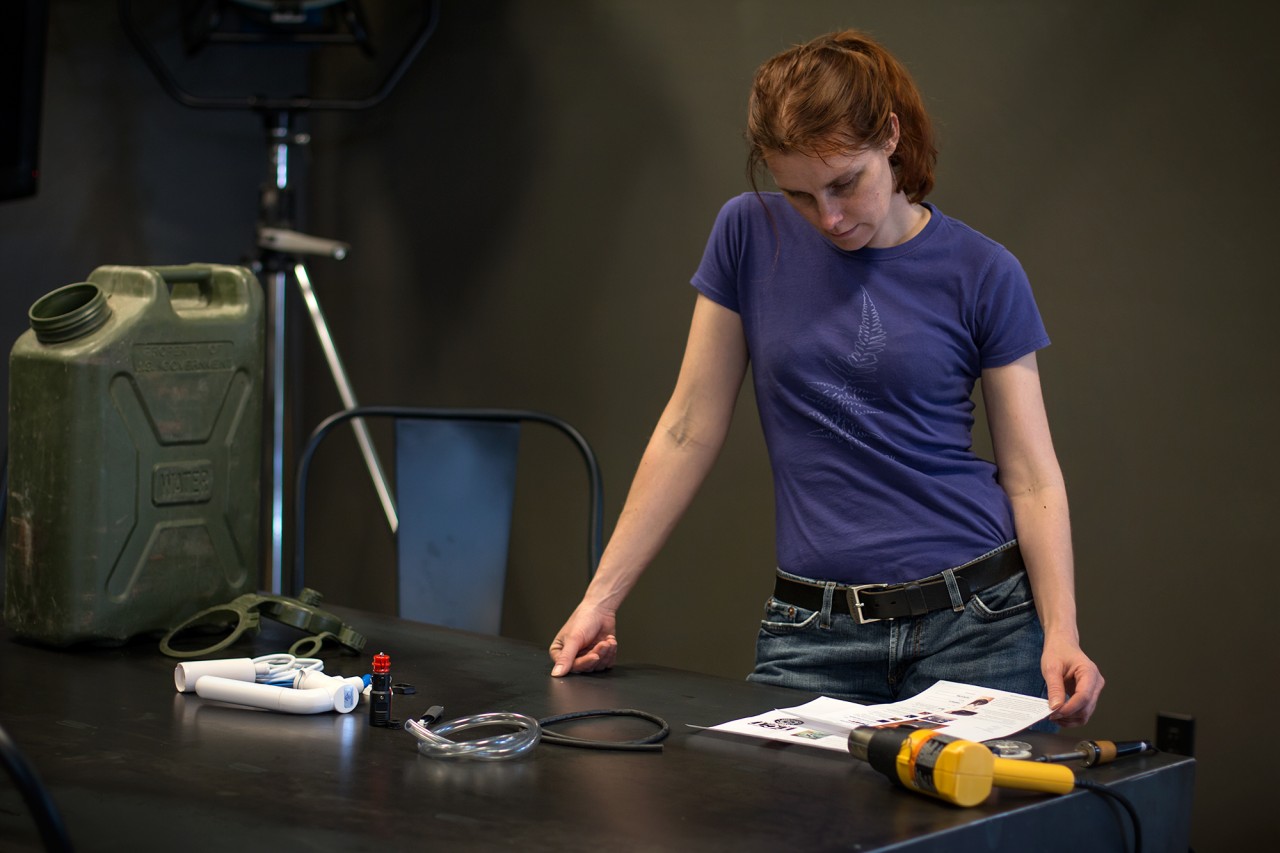
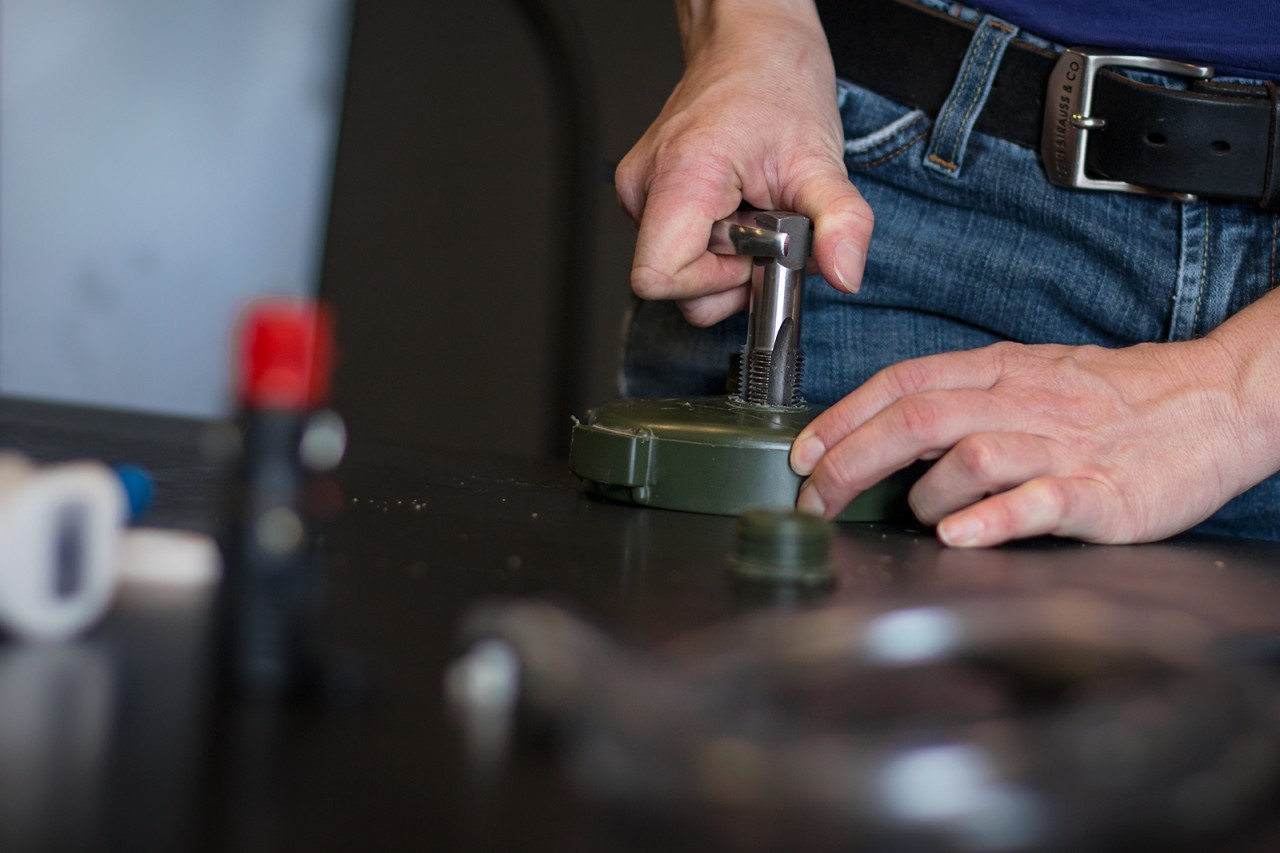
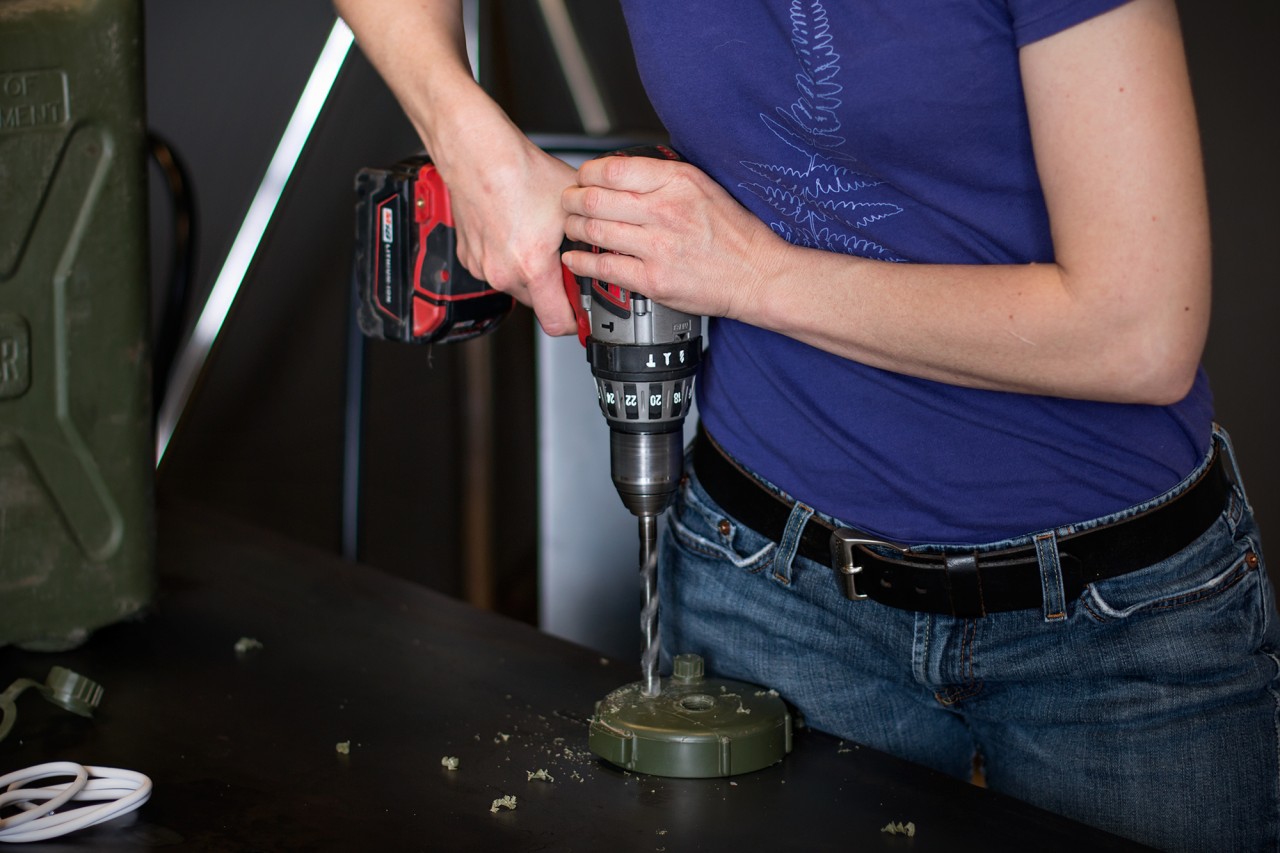
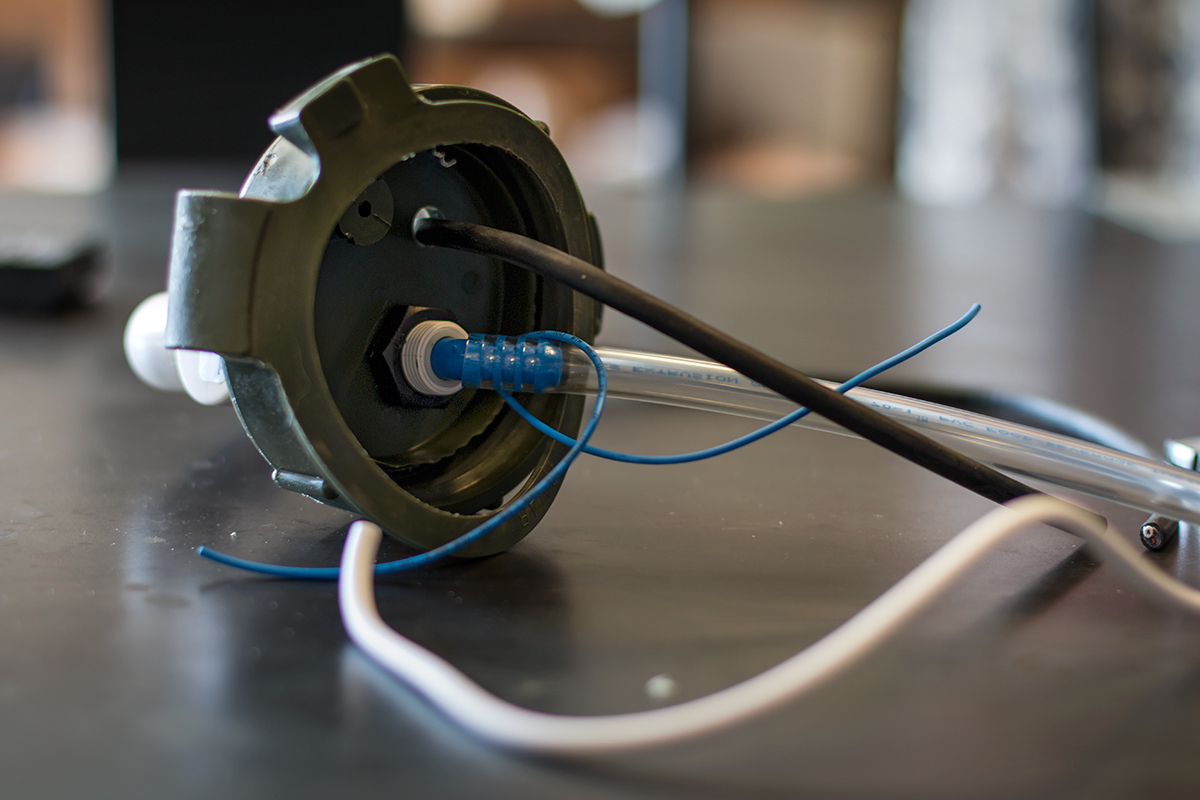
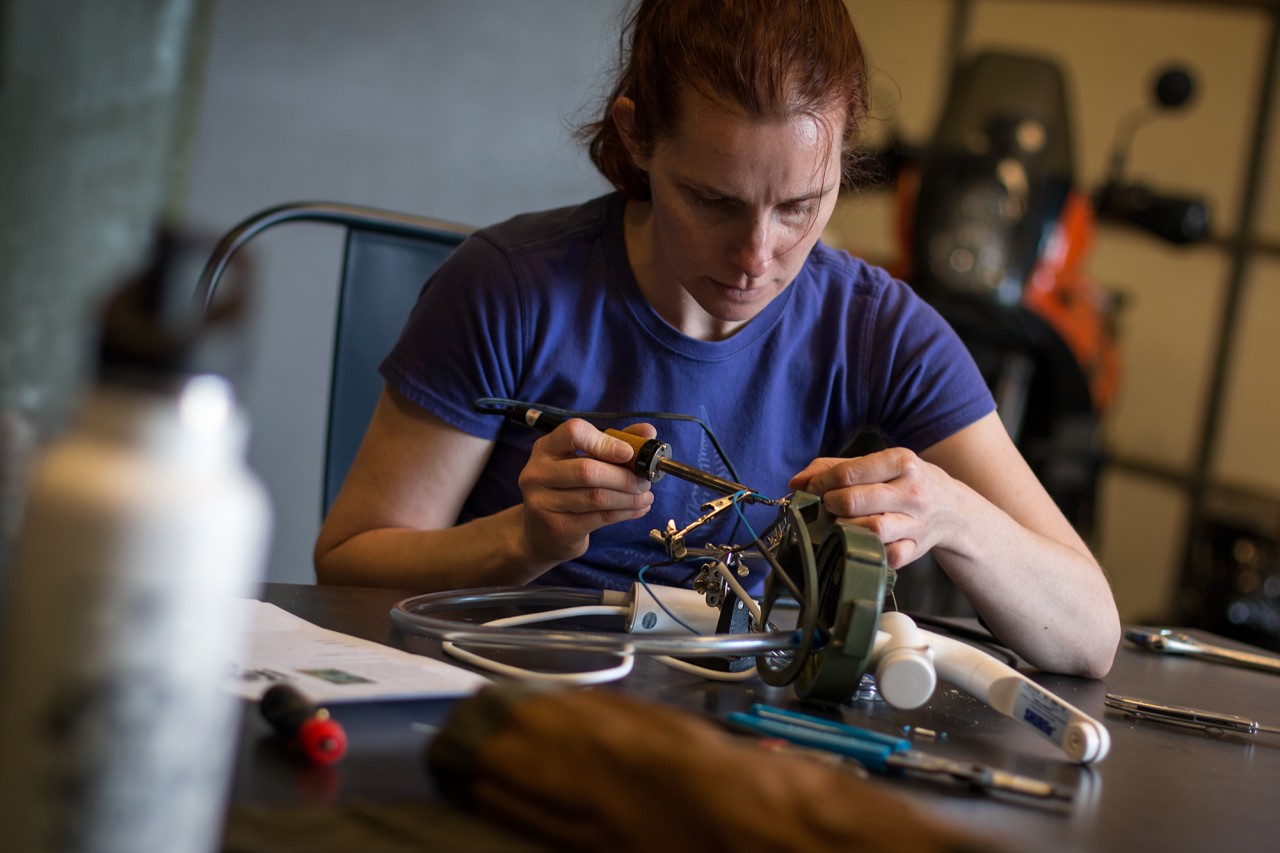
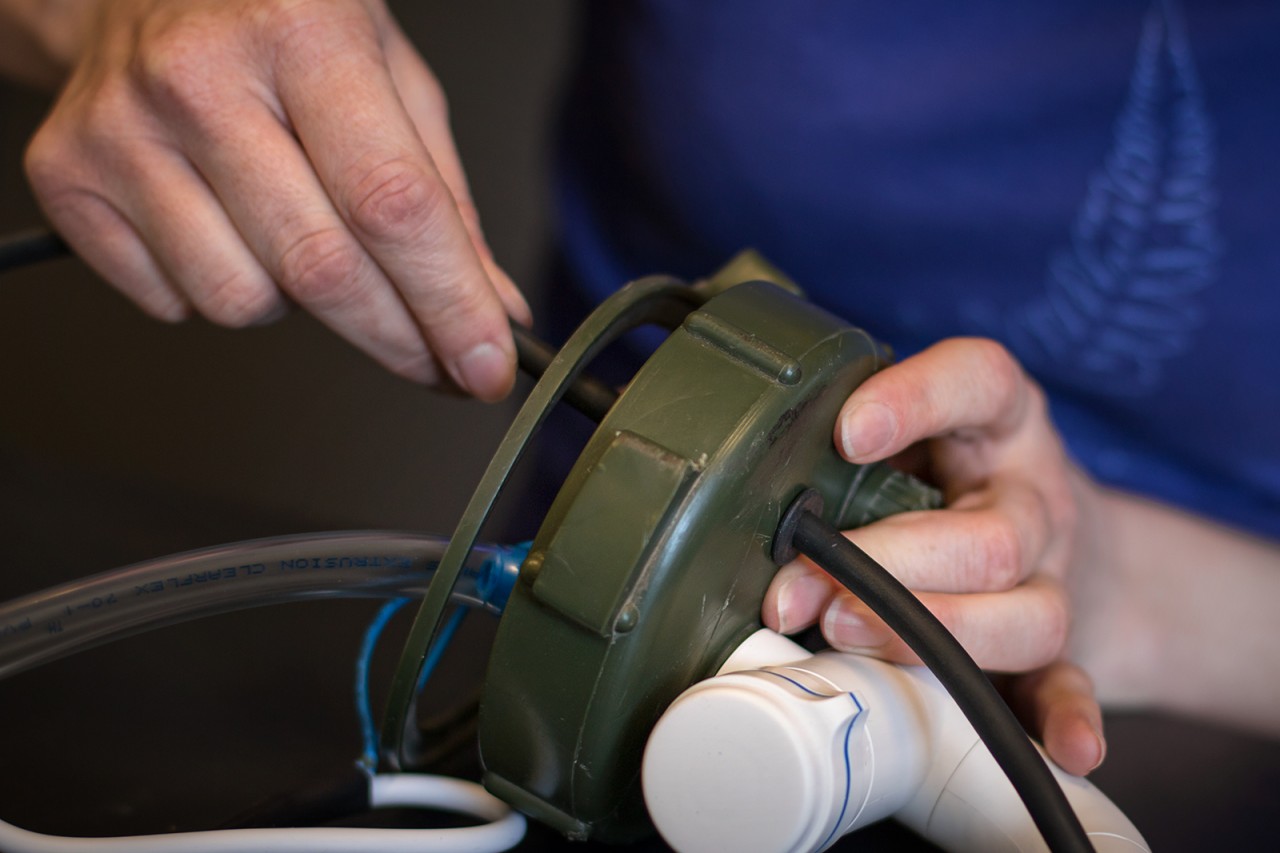
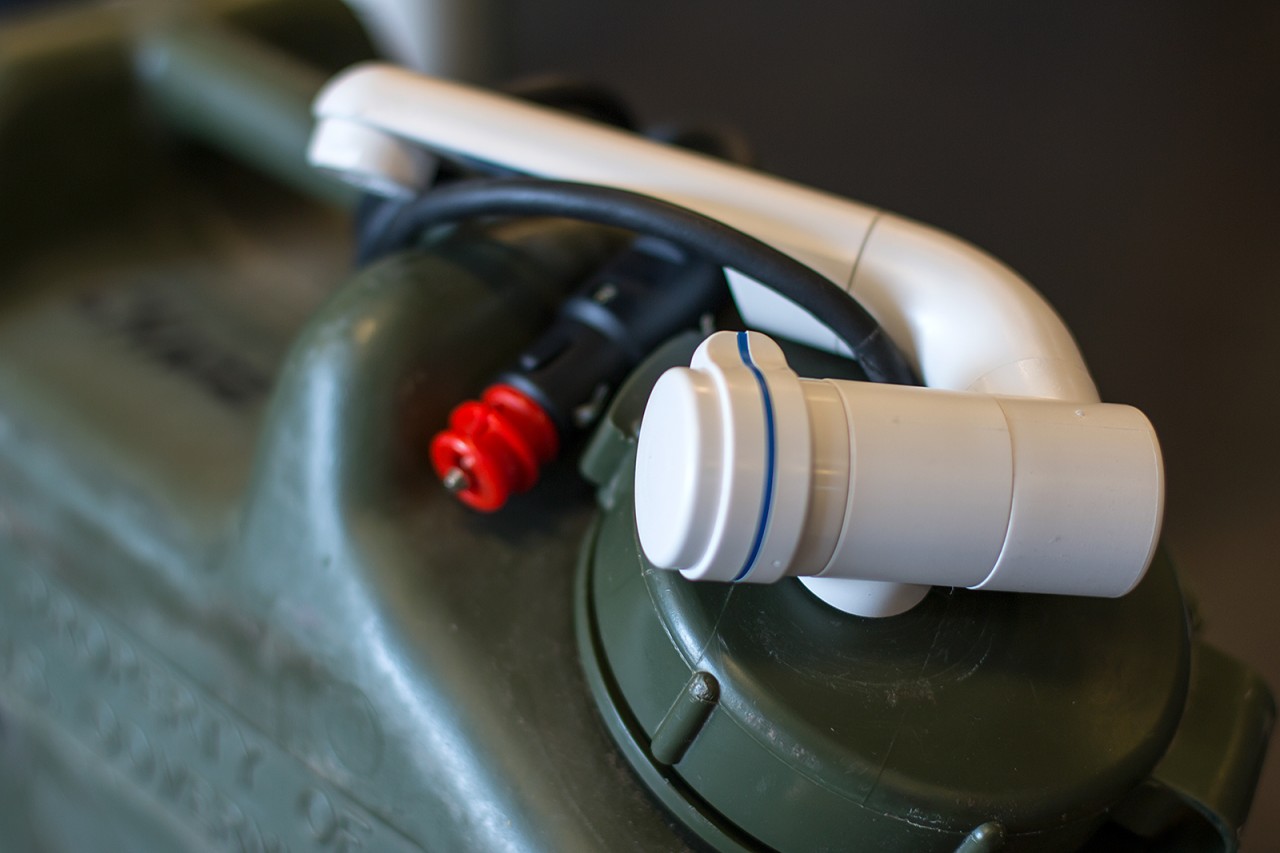
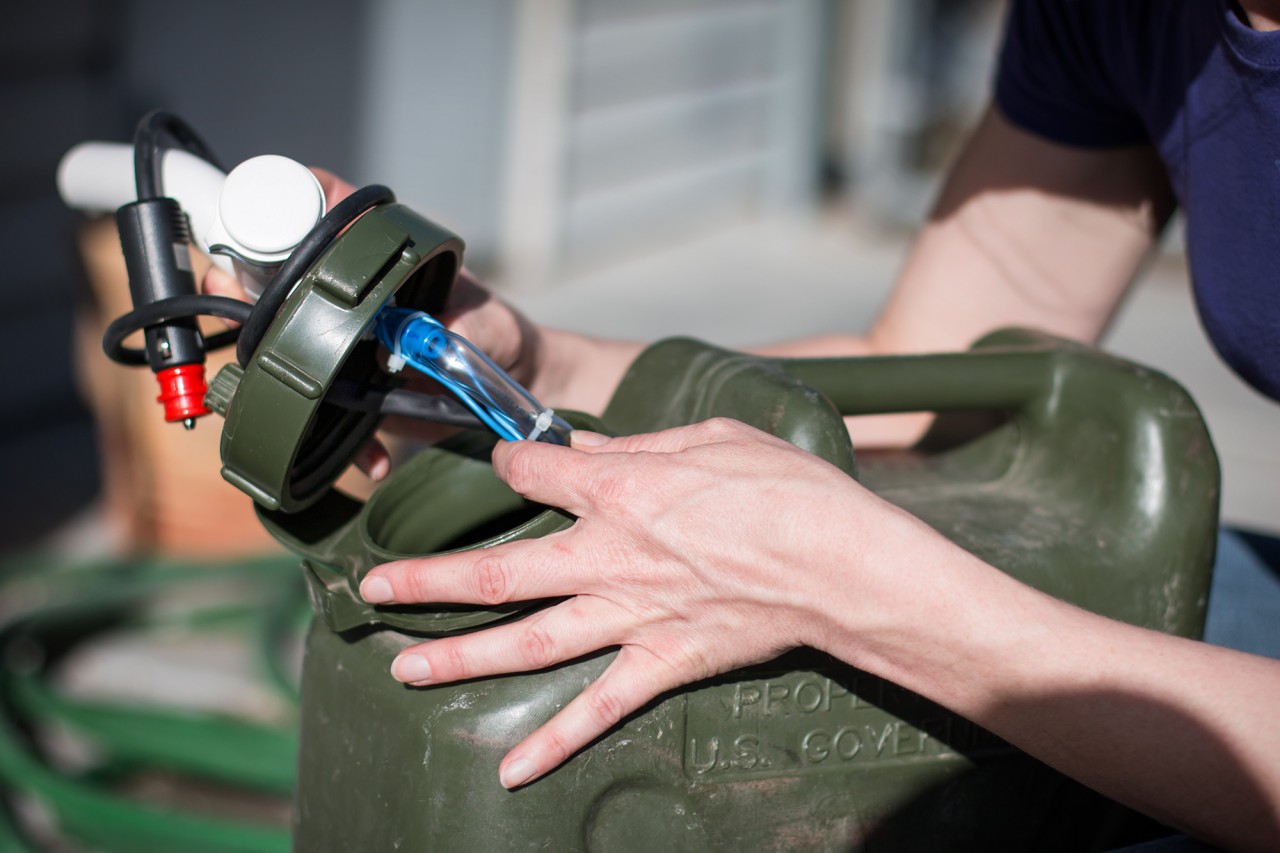
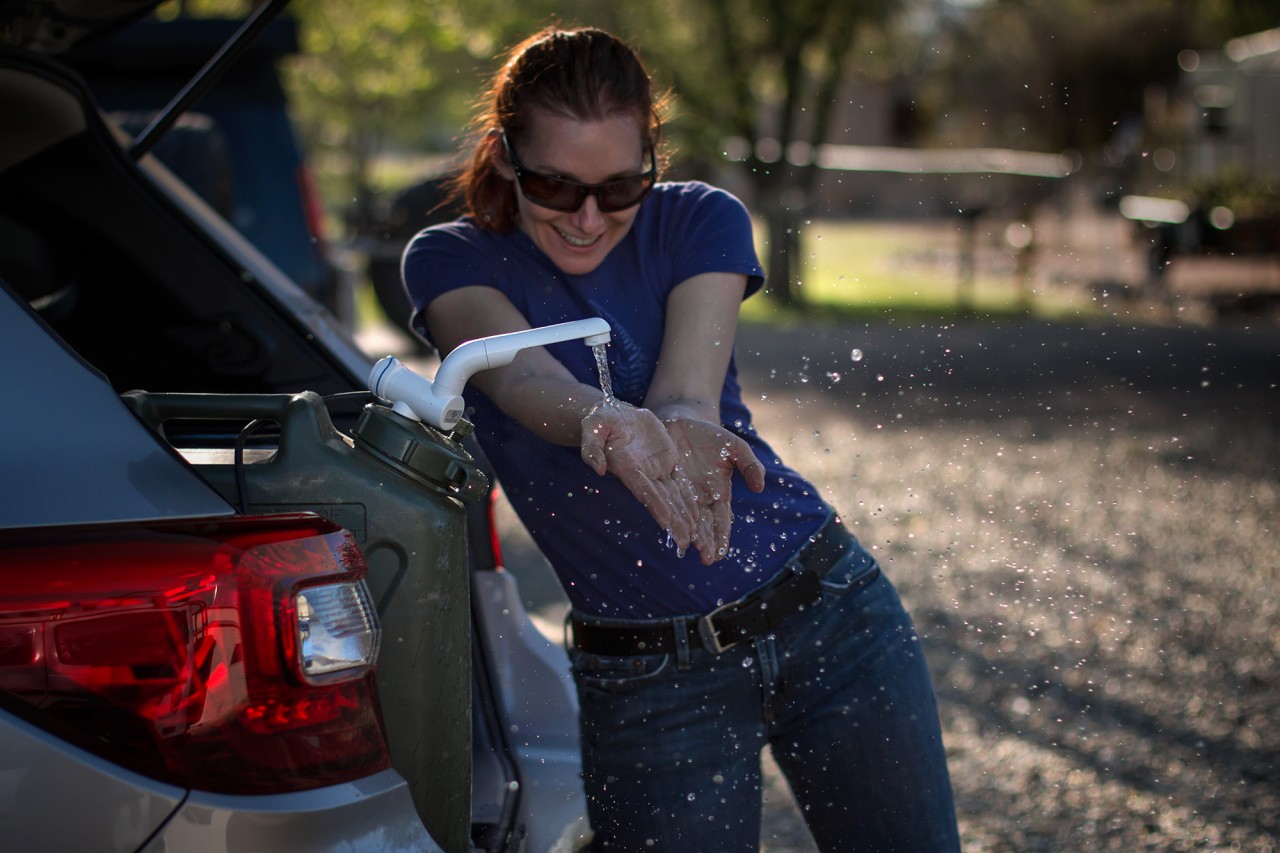
One Comment
JAV Japan
November 20th, 2018 at 7:02 amInteresting Post! thanks!